
Inspired By Medieval Illuminated Manuscripts, I Created A Modern-Day Bestiary Of Rare And Endangered Farm Animals
I am an artist from Quebec, Canada. The type of artwork I make is painted paper collage. Painted paper collage differs from traditional collage in that I do not use found papers. Rather, I make each paper myself. Ten years ago I also became a small scale farmer. It was my experience in farming that made me aware of the crisis of biodiversity loss in agriculture, and it was my need to create as an artist that led me to make an art project which addressed this problem.
We normally think of biodiversity loss as something that affects only the natural world and wildlife. Seldom do we imagine that extinction is a possibility for farm animals. Nevertheless, the FAO estimates that the number of livestock breeds at risk of disappearing may be as high as thirty-five percent. With this rather sobering fact in mind, I created my project “Rare Beasts: A Bestiary of Rare and Endangered Farm Animals.”
Rare Beasts is a series of twenty painted paper and gold leaf collages on 60 x 76 cm wooden panels. Each panel depicts a farm animal on the Canadian Livestock Conservation List. I chose animals which had some significance for Canadian agriculture, and I found most of the animals on farms in my area. The gold leaf borders and other design elements in the collages were inspired by medieval illuminated manuscripts. True to the spirit of a medieval bestiary, each beast’s image is accompanied by a brief text which explains the origins and qualities of the animal. All the images and texts have been compiled into an exhibition catalog which is available online. Rare Beasts received funding from the Conseil des arts et des lettres du Quebec and will be exhibited in regional museums and exhibition spaces within the province of Quebec for the next three years. From research to varnishing, the project has taken two years to complete. The first exhibition of the works will open on April 8th, 2018, in Huntingdon, Quebec.
More info: rarebeastsproject.alysonchamp.com
Silver Appleyard Duck (female)
76 x 60 cm painted paper and gold leaf collage on panel.
The Silver Appleyard is a breed of domestic duck developed in the 1930s by British waterfowl breeder Reginald Appleyard. The breed is considered dual purpose in that it combines excellent egg production with a heavy carcass weight. It is endangered worldwide.
Belted Galloway Cow
60 x 76 cm painted paper and gold leaf collage on panel.
The Belted Galloway is descended from the native cattle of the Galloway region of Scotland and was standardized as a breed in the early twentieth century. Primarily a beef breed, Belted Galloways are known as thrifty cattle because they can fatten well on poor forage. They grow a double-layered coat in winter in place of body fat, and this insulated coat keeps them warm. Galloways produce beef which highly flavourful, finely marbled, and lean. The breed is recovering in the U.S. and U.K., but remains endangered in Canada.
Berkshire Piglet
60 x 76 cm painted paper and gold leaf collage on panel.
This British breed has a history that goes back to the seventeenth century. They were once so popular that Queen Victoria herself had a Berkshire boar named the Ace of Spades. These pigs were commonly found on British and North American farms until the mid-twentieth century when changes in agricultural production and food fashion made white-skinned varieties of pig more desirable. The Berkshire is considered a vulnerable breed in Canada.
Canadian Horse
60 x 76 cm painted paper and gold leaf collage on panel.
The Canadian Horse is descended from the first horses sent by Louis XIV of France to the colonists of what is now the Province of Quebec in the mid-seventeenth century. The breed evolved into a distinct type in isolation from other genetic influences and as a result was extremely well adapted to its environment. Small, hardy, calm, and strong, the Canadian was the preferred mount of the Union Army in the U.S. Civil War. Thousands more died on the battlefields of Europe during World War I. These losses combined with the mechanization of agriculture and transportation rendered the breed nearly extinct by the 1970s. Although its numbers have increased, the Canadian remains vulnerable.
Chantecler Rooster
76 x 60 cm painted paper and gold leaf collage on panel.
The Chantecler is a Canadian breed of chicken developed by Brother Wilfrid Châtelain, an agronomist at the Oka Agricultural Institute in Oka, Quebec, in 1918. The dual purpose breed was created to withstand the harsh Canadian winter, and the hens are good egg layers even in the dark winter months. The breed was extremely popular in Quebec until the 1950s when agriculture became more industrialized and specialized. The Chantecler was believed to be extinct in the 1970s, but due to the efforts of a small group of devoted breeders, the breed has made a bit of a comeback. It remains on the endangered list.
Clydesdale Horse
60 x 76 cm painted paper and gold leaf collage on panel.
The Clydesdale breed can trace its origins back to Lanarkshire, Scotland, in the mid-eighteenth century. Once the most popular breed of draft horse, by the 1960s the Clydesdale was nearly extinct. Approximately five thousand remain in the world.
Cotswold Sheep
76 x 60 cm painted paper and gold leaf collage on panel.
Cotswold sheep hail from the Cotswold Hills region of south central England. This breed is thought to have been brought to England by the Romans early in the Christian Era. Cotswold sheep produce excellent white wool which was the source of much wealth during the Middle Ages. They are, in a sense, the sheep that built cathedrals. The breed remained popular with farmers in many parts of the world until the twentieth century, but is now considered endangered.
Embden Goose
76 x 60 cm painted paper and gold leaf collage on panel.
Embden geese are thought to have originated in the North Sea region of Europe, possibly in Germany or the Netherlands. Records of white geese in this region go as far back as the thirteenth century. While they are still fairly popular in Europe, Embden geese are listed as vulnerable in Canada.
Light Sussex Hen
76 x 60 cm painted paper and gold leaf collage on panel.
The Light Sussex is one of the first three standardized varieties of Sussex chickens developed in England in the early nineteenth century. Used for both meat and eggs, the Light Sussex was once one of the most popular chicken breeds in the U.K. and North America. The move to more specialized farming meant that dual purpose breeds like the Sussex became less desirable as faster growing meat birds and hybrid layers replaced them. The Light Sussex is on the watch list on many livestock conservation groups.
Lynch Lineback Cow
60 x 76 cm painted paper and gold leaf collage on panel.
The Lynch Lineback is a Canadian landrace breed which originates in Eastern Ontario. This breed is thought to have evolved from Gloucester and Glamorgan cattle which came to North America with the first British colonists. Healthy, thrifty, long-lived, and good milkers, Lynch Linebacks are ideally suited to be a family cow or for organic production. The breed is critically endangered.
Newfoundland Pony
60 x 76 cm painted paper and gold leaf collage on panel.
The Newfoundland Pony is a Canadian landrace descended mainly from the Moorland ponies brought to the British colony of Newfoundland to serve the needs of the colonists beginning in the seventeenth century. Once fairly numerous, the breed’s population declined alarmingly throughout the 1970s and 80s. There are perhaps two hundred and fifty Newfoundland Ponies left in the world.
Rhode Island Red Rooster
76 x 60 cm painted paper and gold leaf collage on panel.
Rhode Island Reds were developed by farmers in Rhode Island and neighbouring Massachusetts around the middle of the nineteenth century. The dual purpose breed became one of the most popular and widespread varieties of chicken in the world. Eventually the Rhode Island Red became a victim of its own success. The beautiful colour of its plumage made it desirable as an exhibition bird, and so some breeders focused only on colour. The excellent egg laying capacity of the hens meant that other breeders focused only on that trait, with the result that the industrial egg-laying strain became a lighter, smaller bird. The original, old-fashioned dual purpose Rhode Island Red is considered endangered.
Ridley Bronze Turkey
60 x 76 cm painted paper and gold leaf collage on panel.
This turkey breed was developed by farmer John Richardson in Saskatchewan, Canada, in the 1940s. He wanted to create a hardy, self-sufficient type of turkey which could breed naturally and was able to forage for its food, making it an ideal bird for small farms. Ridley Bronze Turkeys are in danger of extinction.
Tamworth Pig
60 x 76 cm painted paper and gold leaf collage on panel.
Tamworth pigs are one of the oldest European breeds of pig and are possibly descended from wild boars. They are one of the least interbred varieties of pig, making them genetically unique. Tamworths are well suited to life outdoors and do well when left to forage for themselves. They do not adapt to confinement and are not suitable for industrial production. Once common on small farms in North America and the U.K., their numbers declined precipitously from the 1950s onward.
Canadienne Cow
60 x 76 cm painted paper and gold leaf on panel.
The ancestors of the Canadienne were the now extinct cattle from Normandy and Brittany which were sent to New France (Quebec) by order of Louis XIV in the seventeenth century. Because the conditions in New France were harsh, only the strongest livestock survived. The Canadienne breed is noted for its hardiness and for its high quality milk which is excellent for making cheese. These cattle were commonly found on farms in Quebec until the late nineteenth century when bigger dairy breeds like the Holstein took over. There may be as few as one thousand Canadiennes left in the world.
Royal Palm Turkey
60 x 76 cm painted paper collage and gold leaf on panel.
The beautiful Royal Palm Turkey was bred for exhibition by Enoch Carson in Lake Worth, Florida, in the 1920s. Although it was not meant to be used for commercial meat production, they are actually excellent birds for the small farm setting. They reproduce naturally and are good foragers who will keep the farmyard insect population in check. The Royal Palm’s status is listed as threatened.
San Clemente Island Goat
60 x 76 cm painted paper collage and gold leaf on panel.
The critically endangered San Clemente Island goat is something of a mystery. They are descended from a population of feral goats which were left on San Clemente and Santa Catalina Islands off the coast of California. They were believed to be of Spanish origin but recent DNA studies have shown these goats to be genetically unique from other Creole goat populations in the Americas and Carribbean. San Clementes are a ‘low odour’ goat which makes them interesting for milk production. Only a few herds in the U.S. and Canada remain.
White Park Cow
60 x 76 cm painted paper collage and gold leaf on panel.
White Parks were once the prized cattle of the Celts and were possibly the sacrificial animals in Druidic rituals. The ‘Park’ part of their name comes from the Medieval practice of ’emparking’ the land of great English estates for use as hunting preserves. The semi-feral herds of cattle were once hunted by nobles along with stags and boar. Now the breed is mainly used for beef. A small number of the cattle were brought to Canada shortly before WWII and some of their progeny made their way to the U.S. The breed is extremely rare in North America and remains on the watch list in the U.K.
Suffolk Horse
60 x 76 cm painted paper collage and gold leaf on panel.
The horses of the Vikings and Flemish draft horses are some of the possible progenitors of the Suffolk Horse. As its name would suggest, the Suffolk breed was developed in the county of Suffolk, England, and it was renowned for its strength and endurance as early as the eighteenth century. Suffolks are shorter than many draft breeds and they are also always chestnut in colour. They are commonly called Suffolk Punches, possibly for their ‘punched up’ muscles or because they are stout and round like punch bowls. They came to North America in the mid-nineteenth century, but they were never as widely dispersed as many other draft breeds. So when farming became mechanized in the mid-twentieth century, the Suffolk was already in a vulnerable position. They remain endangered worldwide.
Shropshire Sheep
76 x 60 cm painted paper collage and gold leaf on panel.
The Shropshire Sheep comes from the West Midlands region of England. It was standardized as a breed in the mid-nineteenth century. The Shropshire was used for meat and wool and was extremely popular with farmers in the U.K. and North America until the 1940s. The Shropshire is unusual among sheep in that it does not strip the bark off trees or eat their leaves, making it the perfect lawn mower for orchards or Christmas tree plantations.
769views
Share on FacebookAnd numerous others are on the list as well unfortunately. Others are extremely limited in genetic diversity .
And numerous others are on the list as well unfortunately. Others are extremely limited in genetic diversity .

 Dark Mode
Dark Mode 

 No fees, cancel anytime
No fees, cancel anytime 




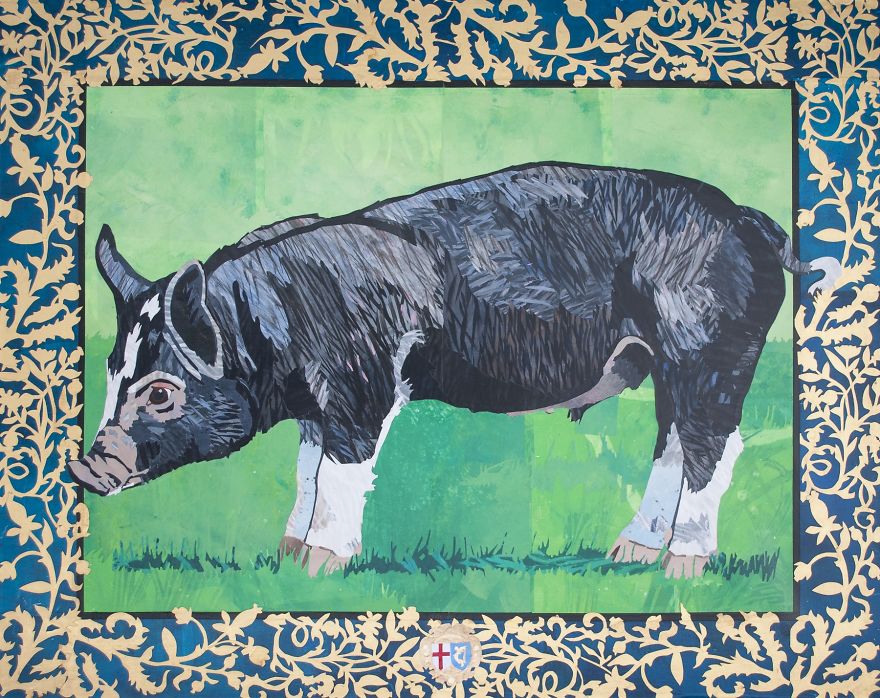


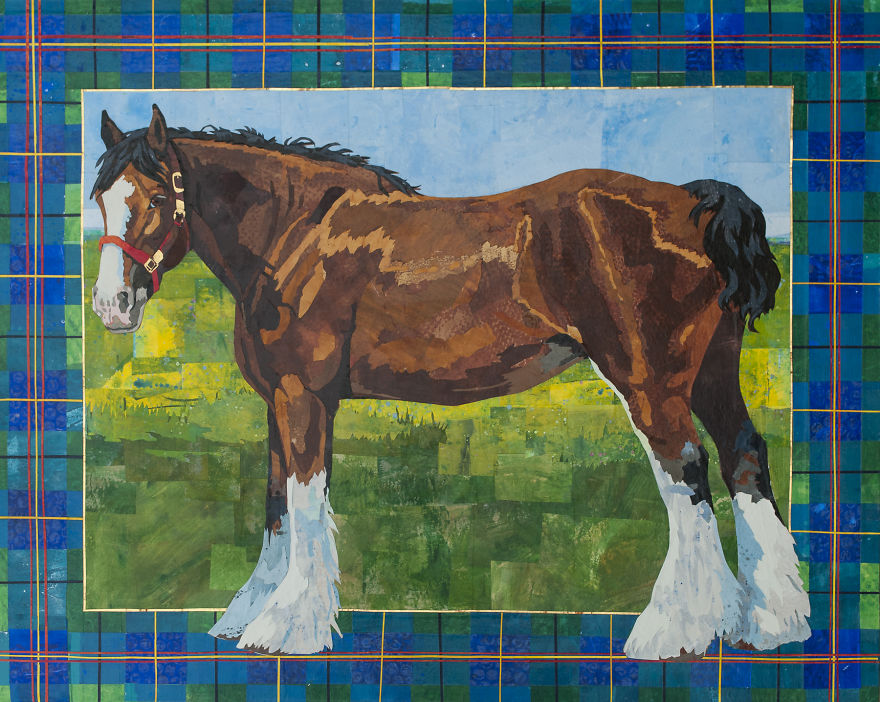
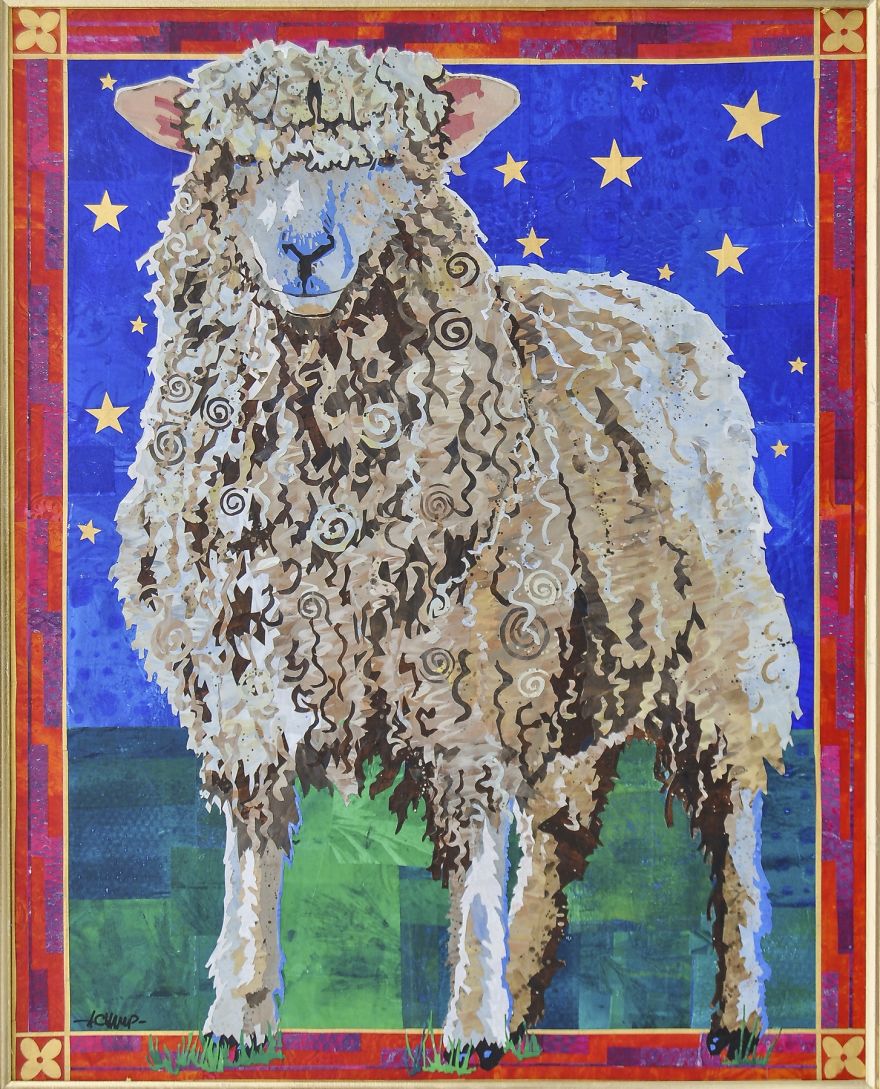


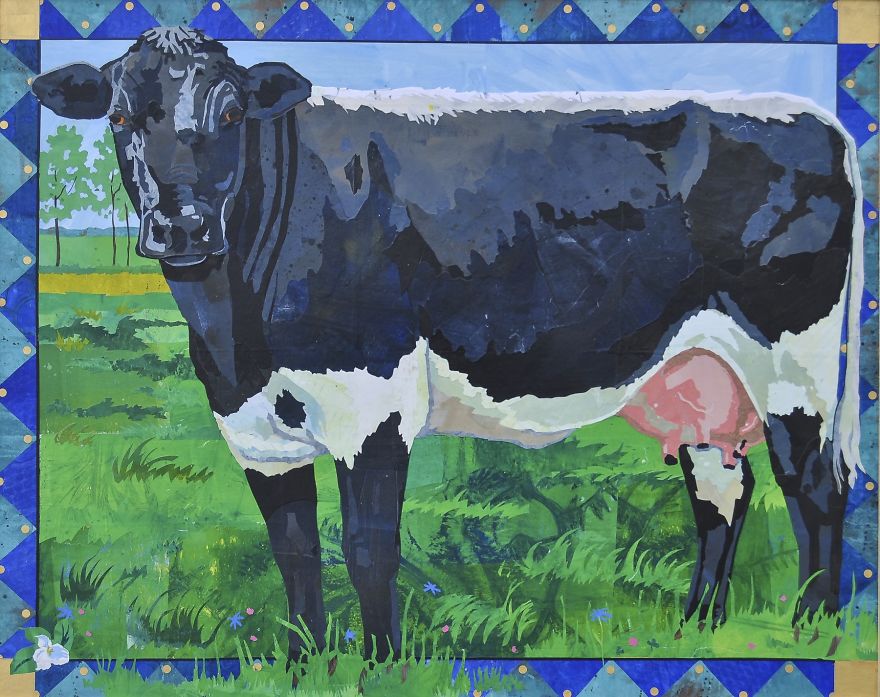







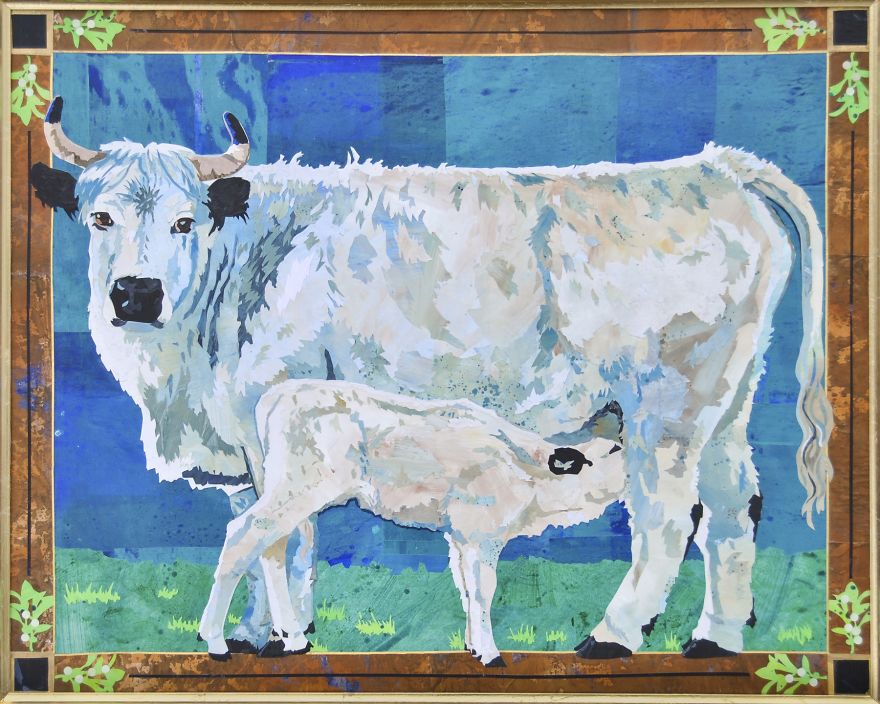



























20
7